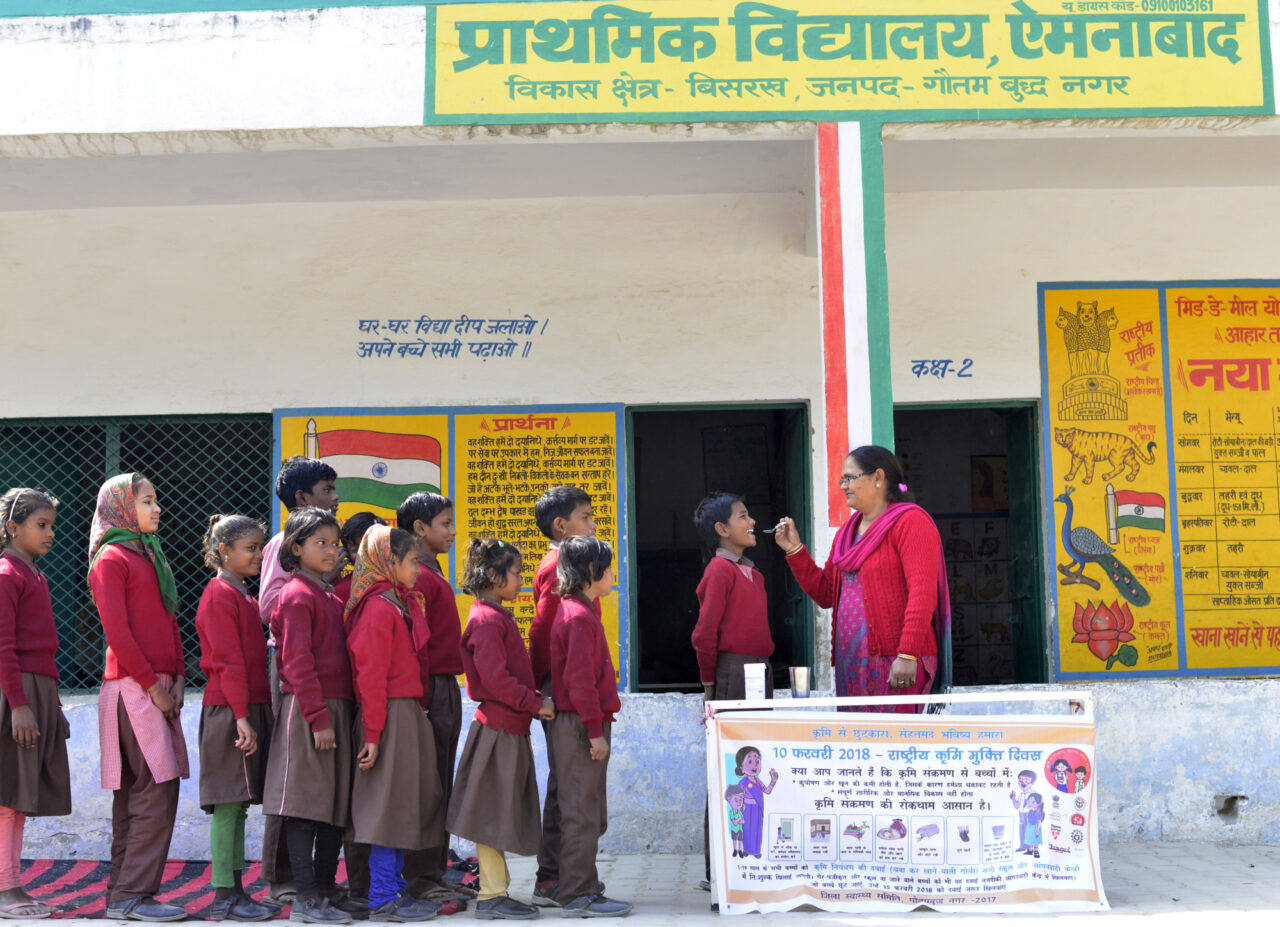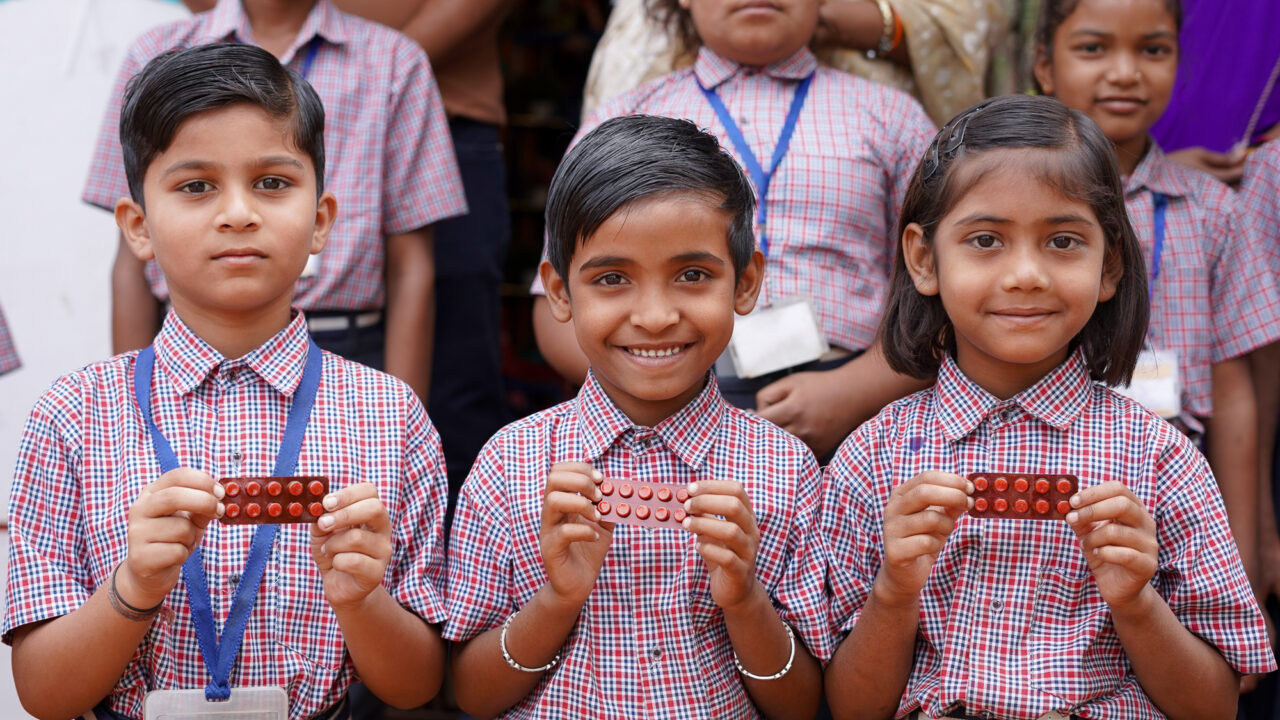We are excited to share the results of some new modeling we’ve been working on regarding the impact of our Deworm the World program over the past 10 years: we estimate that by 2042 the program’s first decade will likely have increased individual livelihoods by over $23 billion (2022 USD) across Kenya, India, Nigeria, and Pakistan. We estimate $1.1 billion in returns to children dewormed in Kenya, $20.8 billion in returns to children dewormed in India, $860 million in returns to children dewormed in Nigeria, and $760 million in returns to children dewormed in Pakistan. To achieve this gain, approximately $140 million was spent on deworming in these geographies over the last ten years. These estimated costs are inclusive of Evidence Action program costs, government costs, prevalence survey costs, and drug procurement costs (more on how we calculate costs here).
Estimating economic returns
This means that for every $1 that has been spent on deworming, we expect an average of $169 in return to dewormed children’s livelihoods. To estimate these figures we set a maximum economic return a child dewormed could achieve and limit benefits to a dewormed child 20 years into their productive life after being dewormed. We recognize the result may seem quite massive, but believe it to be a conservative expression of the results of treating an estimated 343 million individual children in Kenya, India, Nigeria, and Pakistan over the course of our 10 years of programming. (This estimate for children reached is lower than our total figure expressed elsewhere, as Ethiopia, Vietnam, and non-TA states in India are currently excluded from this analysis.)1
Estimation for the total impact from deworming rests on two key pieces of research: Ted Miguel and Michael Kremer’s seminal research on deworming and an epidemiological model constructed by our lead epidemiologist and cost-effectiveness team. Miguel and Kremer’s2original rigorous deworming trial along with Hamory et al’s3 20-year follow up and measurement of economic return to dewormed children (one of the only long-term studies of its kind, and still ongoing) have been our guiding light to understand the economic impact of deworming and is also the foundation of our work with UC Berkeley’s Center for Effective Global Action (CEGA) and Berkeley Initiative for Transparency in the Social Sciences (BITSS) to develop the deworming Open Policy Analysis (OPA).4
Limitations and need for further epidemiological modeling
The OPA takes the income benefits found by Hamory et al and additional key deworming studies5, alongside Evidence Action implementation data, to provide prospective as well as retrospective policy impacts of deworming interventions (more detailed information on the OPA’s methodology can be found in this working paper). These two formative pieces of work, however, are limited to understanding economic returns to individuals where there is a singular estimate for worm prevalence at a particular point in time. We understand deworming efforts to change the levels of prevalence and intensity of worm infections in the dewormed population and, so, identify a need for further epidemiological work in order to estimate the total economic return of our deworming programs.

Modeling worm infection is highly complex due to the nature of how worm infection prevalence and intensity change over time. While drug treatment is highly effective in treating populations, the rate at which infections reduce over time is highly dependent on levels of treatment coverage (i.e., the proportion of children who receive treatment) as well as other factors such as water, sanitation, hygiene, and environmental conditions, all of which can influence rates of re-infection. Moreover, prior models of deworming impact focus too heavily on health outcomes or derive benefits during the highest levels of prevalence and intensity at baseline.
Capturing deworming impact and looking ahead
We know these models either overlook the productivity gains proven to come from deworming or are not comparable to the benefits derived from decreasing levels of prevalence and intensity over time due to yearly routine deworming. Recent large scale follow up surveys, termed impact assessments, we’ve conducted across multiple geographies now provide reliable data points on the decrease in prevalence and intensity resulting from our sustained deworming efforts. Using these results we developed an epidemiological model that is calibrated to rigorous real world data and is able to estimate changes in prevalence and intensity due to different coverage levels of deworming over time.
Together with the rigorous research on productivity gains from deworming and prior OPA modeling work, our development of an epidemiology model for worm infection allows for the estimation of the total productivity gains from deworming over several years. This estimate conveys our deworming program’s success over the last 10 years and asserts the sizable impact on the lives of the children dewormed. As we move into new phases of the deworming program, we look forward to leveraging this modeling to further engage with governments to help them understand the value and impact of their investments – and ours – in deworming.
If you would like to see our detailed methodology, please email [email protected].
1 We do not include Ethiopia, Vietnam, and states in India which we supported from the national level in this analysis due to the lack of robust costing information available on the programming conducted in those geographies.
2 Miguel, Edward, and Michael Kremer. 2004. "Worms: Identifying Impacts on Education and Health in the Presence of Treatment Externalities." Econometrica 72 (1)
3 Hamory, Joan, Edward Miguel, Michael Walker, Michael Kremer, and Sarah Baird. (2021). Twenty Year Economic Impacts of Deworming. Proceedings of the National Academy of Sciences, 118(14)
4 Fernando Hoces de la Guardia, Sean Grant, Edward Miguel, A framework for open policy analysis, Science and Public Policy, Volume 48, Issue 2, April 2021
5 Baird, Sarah, Joan Hamory Hicks, Michael Kremer and Edward Miguel. (2016). "Worms at work: Long-run impacts of a child health investment", Quarterly Journal of Economics, 131(4)



